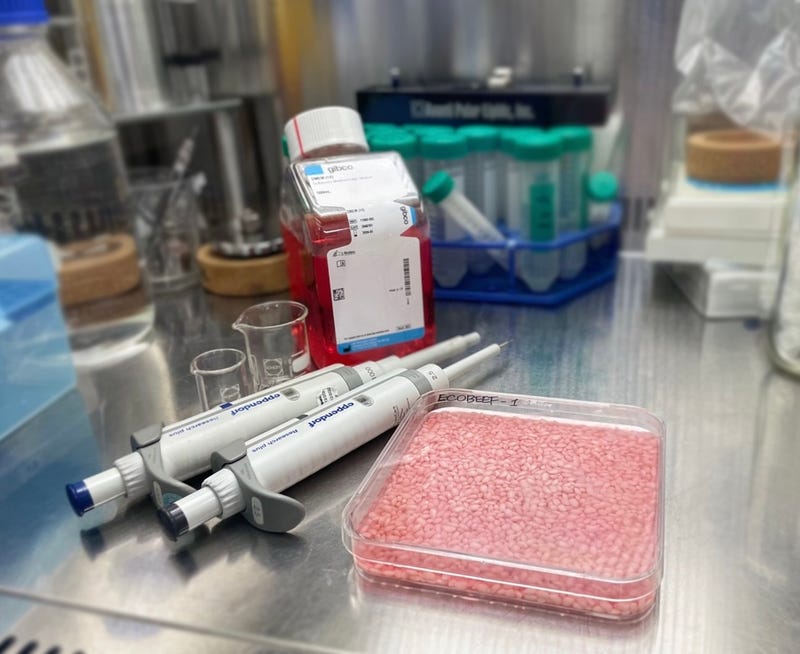The dinner plate of the future might include some beefy rice. No, not beef and rice. Beef rice. In a new study, researchers in Korea say they’ve created rice infused with muscle and fat cells from cows. The hybrid grain purportedly contains more protein and fat than typical rice, and the team argues that it should be cheaper and more environmentally friendly to produce than beef and rice combined.
The study authors were inspired to create their novel food as a means of tackling the numerous ongoing challenges in agriculture. The food industry as a whole is a major contributor to greenhouse gas emissions, for instance, with the bulk coming from meat production. Many scientists and companies have proposed potentially sustainable alternatives to conventional foods, including lab-grown meat (also called cell-based meat), mass-produced insects, and various vegetarian and vegan products.
One avenue of research that the authors were curious about was hybrid food, or food that combines vegetable and animal ingredients. Some teams have already experimented with using existing products like textured vegetable protein (a soy-based flour product that resembles meat) as a scaffold for growing cell-based beef. But the team theorized that rice might be an especially appealing medium for fusing with meat, since it naturally contains a mix of macro- and micronutrients and isn’t a common source of allergy, unlike soy and other common meat substitutes.
 To create their hybrid rice, the researchers seeded rice grains with precursor muscle or fat cow cells, then grew the cells with the help of a petri dish.
To create their hybrid rice, the researchers seeded rice grains with precursor muscle or fat cow cells, then grew the cells with the help of a petri dish.
To produce their hybrid food, they seeded rice grains with precursor muscle or fat cow cells, intended to create either protein-rich rice or fat-rich rice. These grains would then be placed inside a nutritious petri dish, and over the next 10 days or so, the cells would hopefully replicate and develop into mature cells nestled within the rice. But they soon realized that bare rice alone might not be the best scaffold for these cells. So they decided to first coat the rice with fish gelatin and the food additive microbial transglutaminase, believing that these ingredients would enhance the rice’s stickiness to the cells.
Their subsequent creation, which they call “microbeef,” seems to be an early success. Compared to bare cooked rice, the two batches of hybrid rice contain about 8% more protein and 7% more fat, respectively. They also ran tests of the food’s odor profile, indicating that it has a rich flavor, with notes of beef and almond for the rice with added protein and notes of cream, butter, and coconut oil for the rice with added fat.
“The findings of this study provide feasible ideas for creating various types of future hybrid foods,” the authors wrote in their paper, published Wednesday in the journal Matter.
The creation is still only modestly more nutritious than regular rice for the time being. But the authors argue that their rice should already be cheaper to make and produce fewer greenhouse emissions than beef and rice combined, at least once it can be scaled up. They also believe that they can continue to refine the process and create more beef-like rice and are already working on a better growth strategy for their fat-rich rice. All of the ingredients used to create the hybrid rice are edible, meaning they shouldn’t pose any additional food safety concerns.
The team ultimately envisions that their hybrid food, and others like it, can be a boon to people all over the world—and even those outside of it.
“In the future, this self-production system of grain-based hybrid foods could ensure food relief in underdeveloped countries, during war, and in space,” they wrote.
>>> Read full article>>>
Copyright for syndicated content belongs to the linked Source : Gizmodo (AU) – https://gizmodo.com.au/2024/02/scientists-create-beef-infused-rice-with-cow-cells/































